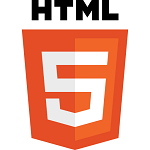
Back when the iPad was nothing more than an Apple gadget rumor, publishers began imagining the possibilities the device would bring. Only 22 months into the so-called tablet revolution, the iPad hasn’t “saved” struggling print publishers, but early indicators look positive for publishers old and new. Last month, Apple went live with Newsstand, a new feature in iOS 5 geared toward bringing publications front and center.
Like it or not, the iPad is changing the way we read and Pew says that tablet owners are more engaged than PC users are. Naturally, publishers are looking to Amazon’s Kindle Fire next.
This week, we saw the first official launch of a product built on Pressly, a tablet Web app-building platform and finalist at this year’s TechCrunch Disrupt.
Much like OnSwipe, its closest competitor, Pressly takes existing websites and turns them into tablet-friendly, Flipboard-esque Web apps. It can grab content from RSS feeds, Twitter or a CMS and lay it out in a fashion that is far more appropriate for the tablet form factor than most desktop websites.
The platform is free to use, but Pressly takes a cut of the resulting ad revenue. The service isn’t yet open on a self-serve basis. Instead, publishers can >inquire with Pressly about getting on board.
The Advantages of HTML5 vs. Native Tablet Apps
This type of low-cost, cross-platform tool is just the kind of thing publishers big and small need to keep up with the rapid growth of tablet adoption. These days, when we say “publishers” we don’t just mean established media companies. Anyone with a personal or company blog can benefit from HTML5-friendly frameworks like these.
The advantage here comes both in the price tag as well as what goes on under-the-hood. Developing native applications for the iPad can get costly enough without factoring in expansion to Android and other emerging tablet operating systems. By building tablet apps that work in the browser, there’s no need to worry about rebuilding them in multiple programming languages and submitting them to various app stores. They just work.
It can also allow publishers and businesses to better profit from their digital offerings than they can in proprietary app stores. When Apple slapped a 30% revenue share requirement onto in-app purchases made within iOS applications, many publishers got queasy, and a few of them even jumped ship.

The Financial Times is one such publication. After they declined to comply with the new revenue share, Apple removed their app from the iTunes App Store. In its place, The Financial Times launched a tablet-friendly Web app coded in HTML5. Not only does it work across platforms, but the company reported getting more traffic to its Web app than it had seen on the iOS version.
Inclusion in the iTunes App Store isn’t without its advantages though. For many developers and companies, it offers enhanced exposure and distribution. That’s especially true for publishers in particular now that Newsstand is baked right into iOS.
Source Read Write Web
Most Popular Tech Stories
Latest News
Manor Lords: How to survive the harshest of winters
Winter is coming, and as you might expect it is not all games of fluffy snowball fights and snowman building in Manor Lords. Winter is tough and, for your first...




















